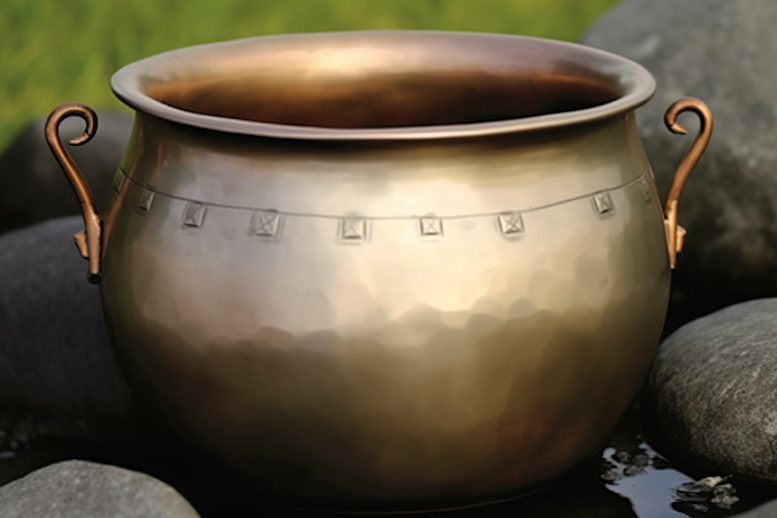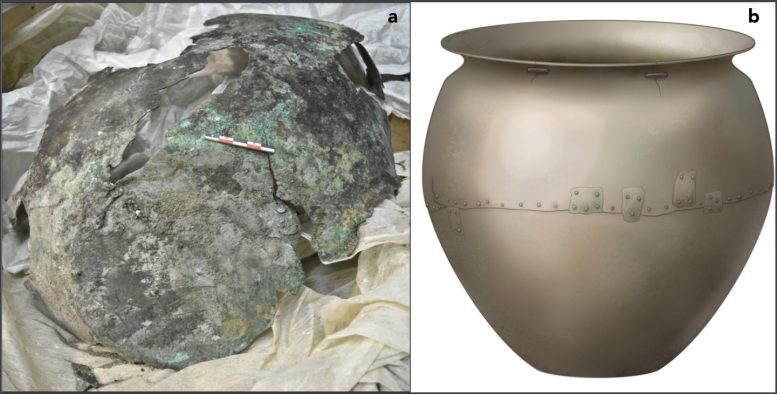
For a long time, archaeologists inferred the uses of ancient tools by referencing written documents and contextual hints. However, when it came to ancient dietary habits, they had to rely more on educated guesses regarding food consumption and preparation methods.
Recent research published in the journal iScience delves into protein traces from old cooking vessels. This study revealed that during the Maykop period (3700–2900 BCE), the Caucasus inhabitants consumed deer, sheep, goats, and members of the cow family.
“It’s really exciting to get an idea of what people were making in these cauldrons so long ago,” says Shevan Wilkin of the University of Zurich. “This is the first evidence we have of preserved proteins of a feast—it’s a big cauldron. They were obviously making large meals, not just for individual families.”
Scientists have known that the fats preserved in ancient pottery and the proteins from dental calculus—the hard mineralized plaque deposits on the teeth—contain traces of the proteins ancient people consumed during their lives. Now, this study combines protein analysis with archaeology to explore specific details about the meals cooked in these particular vessels. Many metal alloys have antimicrobial properties, which is why the proteins have been preserved so well on the cauldrons. The microbes in dirt that would normally degrade proteins on surfaces such as ceramic and stone are held at bay on metal alloys.
“We have already established that people at the time most likely drank a soupy beer, but we did not know what was included on the main menu,” says Viktor Trifonov of the Institute for the History of Material Culture.

The researchers collected eight residue samples from seven cauldrons that were recovered from burial sites in the Caucasus region. This region sits between the Caspian and Black Seas spanning from Southwestern Russia to Turkey and includes the present-day countries Georgia, Azerbaijan, and Armenia. They successfully retrieved proteins from blood, muscle tissue, and milk. One of these proteins, heat shock protein beta-1, indicates that the cauldrons were used to cook deer or bovine (cows, yaks, or water buffalo) tissues. Milk proteins from either sheep or goats were also recovered, indicating that the cauldrons were used to prepare dairy.
Radiocarbon dating allowed the researchers to specifically pinpoint that the cauldrons could have been used between 3520–3350 BCE. This means that these vessels are more than 3,000 years older than any vessels that have been analyzed before. “It was a tiny sample of soot from the surface of the cauldron,” says Trifonov. “Maykop bronze cauldrons of the fourth millennium BC are a rare and expensive item, a hereditary symbol belonging to the social elite.”
Although the cauldrons show signs of wear and tear from use, they also show signs of extensive repair. This suggests that they were valuable, requiring great skill to make and acting as important symbols of wealth or social position—perhaps a little like Le Creuset or Mauviel saucepans today.
The researchers would like to explore similarities and differences in the residues from a wider range of vessel types. “We would like to get a better idea of what people across this ancient steppe were doing and how food preparation differed from region to region and throughout time,” says Wilkin. Since cuisine is such an important part of culture, studies like this one may also help us to understand the cultural connections between different regions.
The methods used in this study have shown that there is great potential for this new approach. “If proteins are preserved on these vessels, there is a good chance they are preserved on a wide range of other prehistoric metal artifacts,” says Wilkin. “We still have a lot to learn, but this opens up the field in a really dramatic way.”
Reference: “Curated cauldrons: Preserved proteins from early copper alloy vessels illuminate feasting practices in the Caucasian steppe” by Wilkin et al., 2023, iScience.
DOI: 10.1016/j.isci.2023.107482
The study was funded by the University of Zurich and the European Research Council.